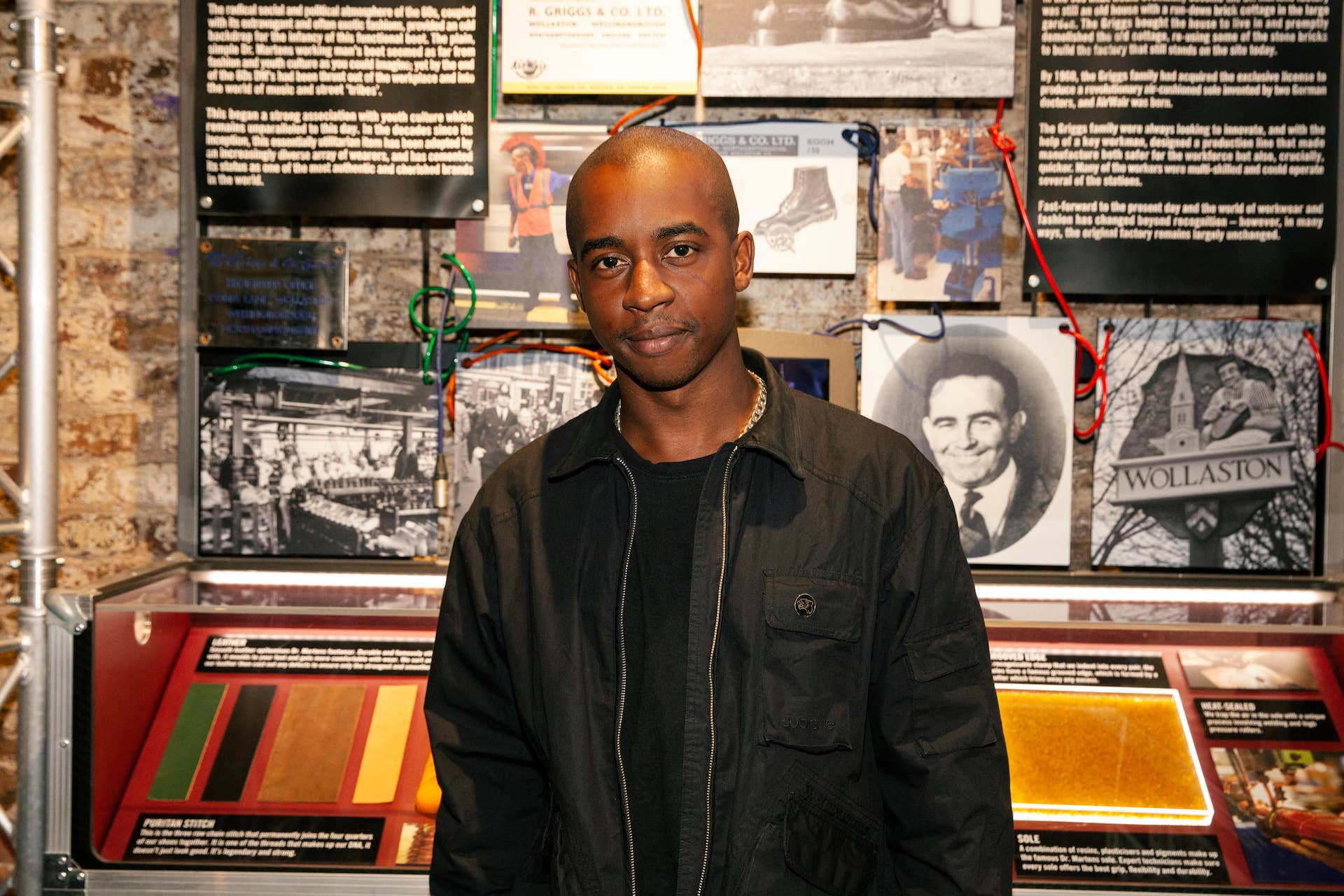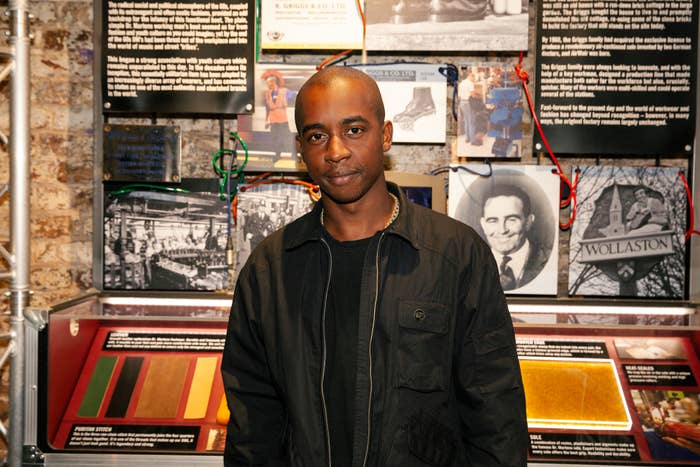
Heritage and innovation are characteristically in tension. As a brand that can trace its conception to 1901, Dr. Martens has competently piloted the thin space between these concepts for 122 years, fluently harmonizing traditional, proven craftsmanship with playful explorations. Between Yohji Yamamoto, BAPE, Rick Owens, and Our Legacy Work Shop, Dr. Martens’ collaborative roster speaks to their willingness to coax the brand outside their conventional design choices. Regardless of the partnership, whether it be the yellow stitching, supple leather, or PVC sole, it never takes too long to ID a Doc.
Helmed by Darren McKoy, Dr. Martens’ creative director since March 2022, the brand finds itself in a unique cultural moment. Currently trends and trend-forecasting move at meteoric velocities, placing pressure on household brands like Dr. Martens to stay on the vanguard of what’s novel and interesting without compromising the pragmatic, solution-forward ethos from which the company originally found its footing. We chopped it up with McKoy in the Doc’s Camden flagship store in London to learn about his journey through footwear, sources of inspiration, and vision for the brand within the mercurial fashion moment we find ourselves in today.
You mentioned that football was your gateway into fashion, specifically, into footwear. Why did football inspire this creative trajectory?
It was mainly due to the fact that I used to collect football boots, right? I used to play for the School of Excellence, which was the UK’s precursor to football academies. I had to collect them — football’s just the first thing I fell in love with. So, I used to collect all the different boots from Puma Kings to Accelerators to World Cups (Copa Mundials) to Diadoras, all these different brands. I’d collect them, clean them, and polish them. They were like an heirloom. I’d play in one pair one week and then I changed the next. Being a part of that community was kind of the epicenter of where it started. It led me to work for one or two or three sports retailers, which then got me into this whole sneaker aspect of British culture.
We’re talking about Reebok Classics and all that kind of stuff. That led into university, continuing to work in sneaker stores, then going to work for Hip up in UK North, which was, along with The Hideout in London, kind of the precursor to End, right?
These stores had all the best brands, all the best things, and it’s where I found my love for products in general. I went on this journey beginning at my love for the narrative behind football boots, to collecting, to obsessing, to coveting the product beyond just the football boot itself. I began to observe the beauty of it, the construction of it, the way that it’s put together, the suppleness of the leather, the way you treat the product, and the way you can polish it. That is kind of the epicenter of my fascination: What is this thing? How do you design this? How do you do that? How does this all happen?
That’s incredible. Did you ever have a pair of Copa Mundials in the collection?
One hundred percent. I had both the Copa Mundials, which were the molded version, and I had the World Cups, which were the screwed version. I used to take the stripes off and make them all black. It was just a way of making them different, putting your own spin on it. I’d color in the stripes on my boots, rip the stitching and pull them off, or cut the tongue off completely if I didn’t want it hitting the boot as I played. This definitely fed into the whole customization aspect of Dr. Martens down the line, all that craziness.
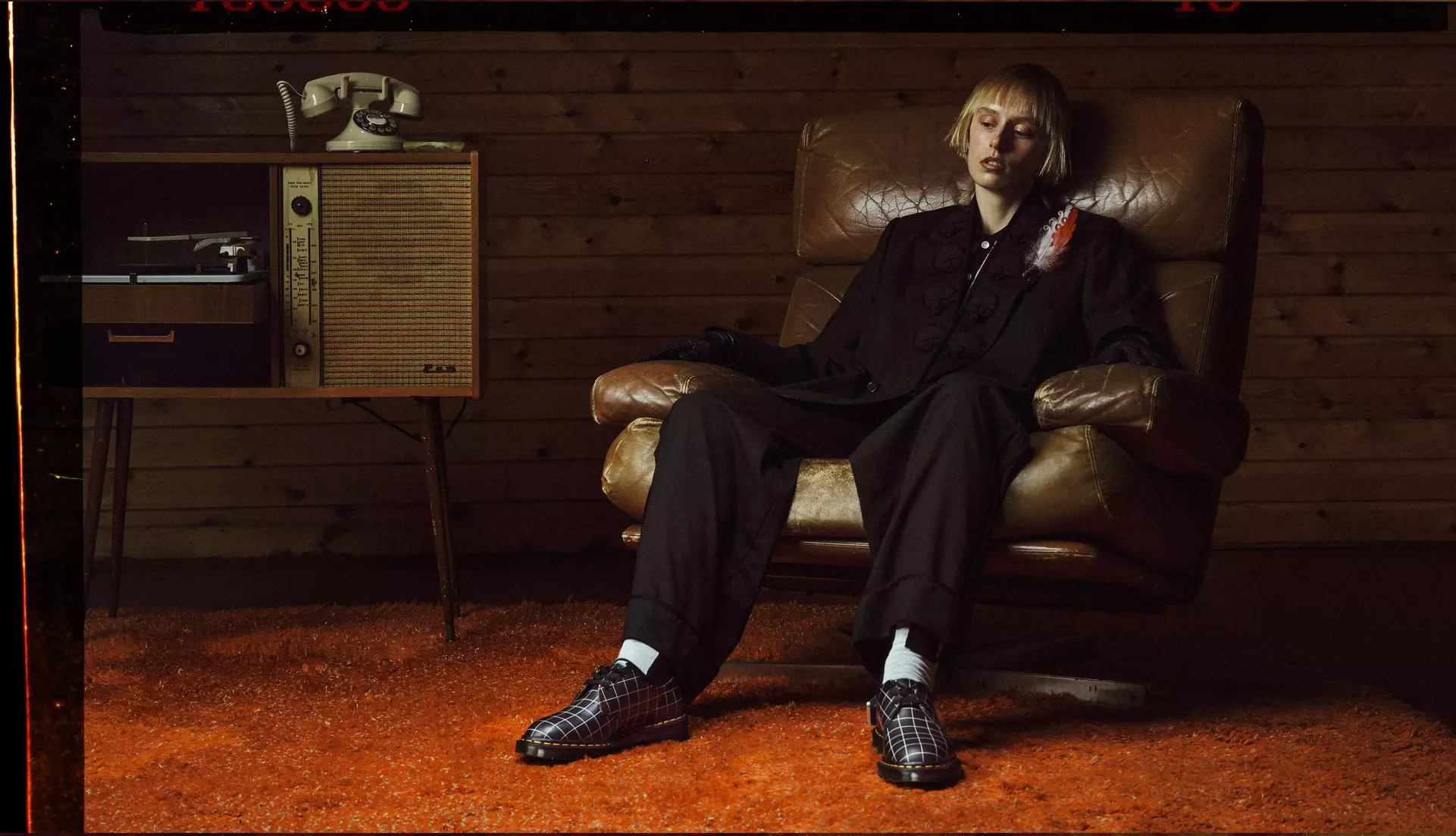
I’m interested in how you tow the line between heritage and innovation. How do you take both into account when designing a product?
The brand was built on innovation first. You won’t have heritage, you won’t have a linear story to tell if you never started with something. What we started with was innovation, a group of special people getting together to find a solution, developing a concept that the brand would build itself around was the first Dr. Martens collaboration. Immediately, the brand’s foundation was collaborative. There are aspects of innovation in terms of how the Air Wair was created and how the boot itself was put together for a time of function and performance, function and durability, function and solutions. That’s the core of the brand.
What that became over six decades plus can be seen in how the brand, over time, was adopted, revered, and plugged into this organic connection between different subcultures and countercultures from the early days of ska, to reggae, to punk, to grunge, to what we have now. This organic adoption is what creates the history, the heritage.
When I talk to creative teams now we focus on the brand’s innovative foundation and how it became iconic over time. You aren’t iconic. You become iconic through consistency. That consistency becomes history that becomes a heritage. That’s why Dr. Martens is such a special brand.
You mentioned you and your team released a special, collaborative collection to celebrate six decades of Dr. Martens. Considering collaboration is a keystone of the company, it’s obvious you choose your partners carefully. How do you make those selections?
Great question. The 12 partners that we selected are 12 partners that embrace this journey with us. Foremost, they are friends and family of the brand whose founders were genuine wearers of Dr. Martens anyway. They already had an actual connection, right? Each collaborator, be it Raf [Simons] or Yohji [Yamamoto], had an interesting story that created each concept. It’s a shame we only developed 12 boots over the 12 months because we could’ve probably done 24 with many other partners.
The way we selected collaborators to design each of the 12 boots is really based within shared brand values; values that intersect through culture and their personal ethos. That’s the reason why we do it. It has to be authentic and true, it’s as simple as that. We did share a subtle brief, how do you bring your point of view to this? How does Sam Ross, a young, Black, creative coming from Northampton who used to live next to the Dr. Martens factory, tell his story? How is he going to take his innate connectivity to the brand and reinterpret the boot through his eyes, his space?
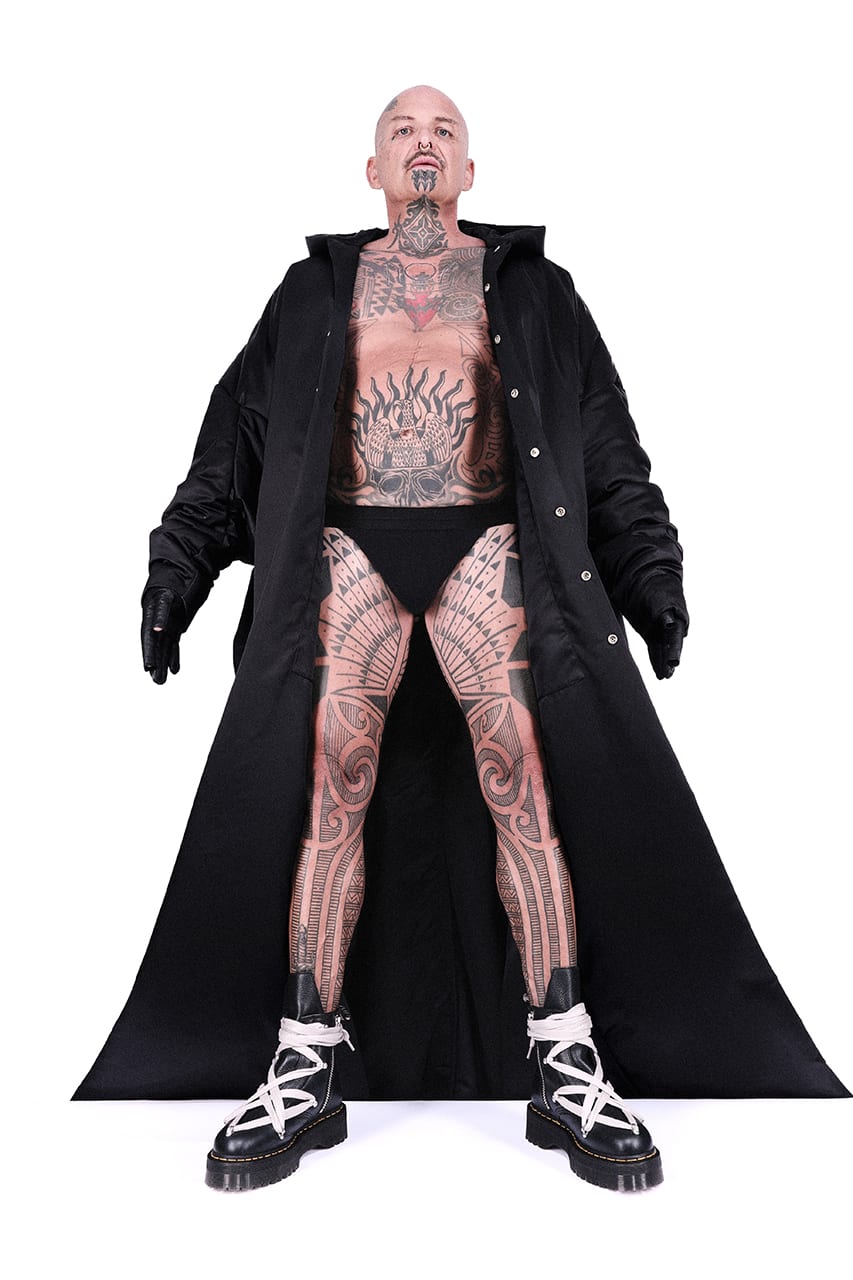
Do you have a particular favorite from the collection?
No, I think every single one of them had a special point of view and a special story to tell, so I think they’re all equally important. I think an important point is the fact we delivered over the pandemic. We actually got this concept to market when the world was going through turmoil. It became a moment for us and consumers to celebrate during a challenging collective experience. Dr. Martens comes into focus as a brand during times of turbulence or times of unrest. We always try to be part of whatever ongoing conversations are happening. It was kind of apt that the events of 2020 came around the 60th anniversary because it highlights what Dr. Martens does, and how we continue to push through.
Are there any subcultures that you personally were a part of that informed the countercultural spirit you brought to the brand?
I think the closest I’ve been connected to subcultures was through music. There’s many different music moments that played a part in my connectivity, be it through hip-hop, or ska, or reggae via my uncles who were part of the original Skins, Black Skins as it were. We were into The Specials and two-tone music, all that kind of sick shit. Even Brit pop culture was big in my life. There were also global hip-hop groups like A Tribe Called Quest and Jurassic 5. In all fairness, we were listening to a lot of American hip-hop. UK soul and jazz music was a big part of my family as well. That being said, it’s not always just about the quintessential brands and groups themselves; it’s music in general as a form of rebel self expression and creativity that’s very close to my heart.
A hundred percent. I’ve been saying for a minute now you guys should dive into a grime collaboration.
Absolutely. I mean if you think about how far grime has come and where it is now, 100 percent. We are involved in that community already, but again, it’s an adoption, right? Those guys are adopting the brand, we can’t and won’t push it on them.
You mentioned Dr. Martens has an organic connection to Japan. Between Nanamica, Yohji Yamamoto, WTAPS, UNDERCOVER, Mastermind, Neighborhood, etc. your Japanese collaborations are impressive to say the least. Is there anything in particular about Japanese artists, designers, or design ethos that the brand, or maybe even you personally, gravitate towards?
Wow, Japanese brands. I mean from the early 2000s to essentially now, today, Japanese brands have remained extremely close to my heart. The attention to detail, the obsession with product, the respect for heritage and history — those are the first things that connected us. Over the last 15, 20 years they’ve been, to a certain extent, at the forefront of streetwear culture. Of course, America has been a big part of that conversation as well with Supreme, Stussy, and all the other brands we know and we love. However, the thing with Japanese culture, or more specifically the people and brands that we work with in Japan, is that they were all inspired by Camden. Harajuku is almost the mirror of Camden. When you walk around Camden, and when you walk around Harajuku, it’s different people but the same vibe. So, take Cyberdog from around the block and put it side by side with some of the eclectic stores in Harajuku, it’s exactly the same vibe. They’re all wearing Docs right?
You talk to Hiroshi [Fujiwara] from Fragment, Shinsuke [Takizawa] from Neighborhood who was just here recently; they were all inspired to a certain extent by Americana, but also British culture and music. You talk to Jun [Takahashi] from Undercover and you quickly learn how he’s inspired by The Clash. I actually think he’s in a Clash cover band himself. The narrative of British culture and British counterculture percolated to Japan, New York, and the punk scene as a whole. Dr. Martens was foundational throughout these transitions, and why we occupy such a unique space as a brand. It’s never really changed. Japanese culture generally holds a respect for heritage and history. It makes sense that Docs are a part of that story.
Let’s talk about craftsmanship. There are distinct parallels when you think about Japanese craftsmanship and British craftsmanship. After all, British culture is heavily built upon craftsmanship. Northampton, where you were earlier, is the heartland of footwear, just like Boston is for New Balance and Reebok. When you think about the UK, it’s Dr. Martens and the iconic craftsmanship that is also innate to Japanese culture. You see it outside of footwear through pottery and other beautiful practices. It always comes down to the purity of product, the purity of creativity. It’s natural.
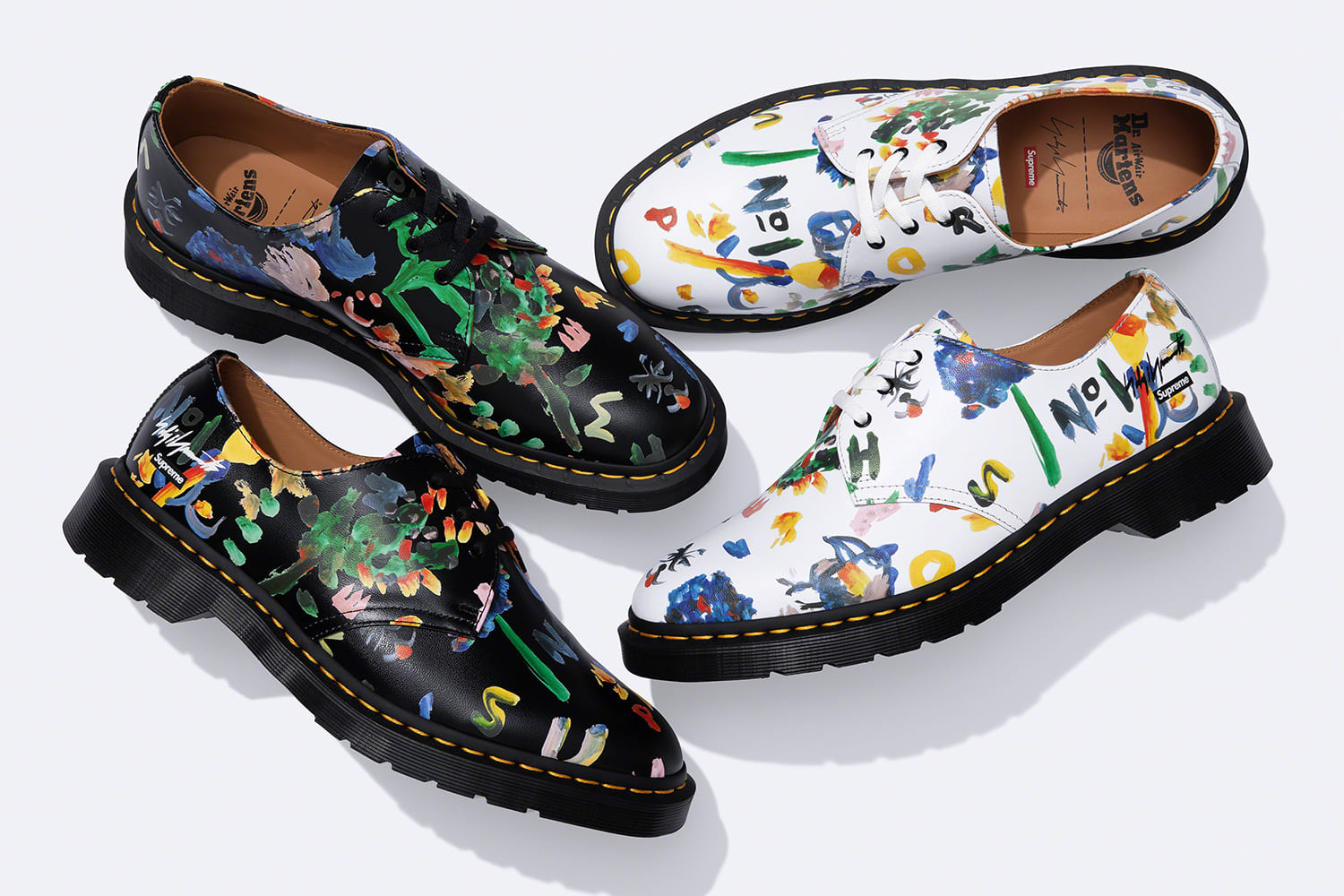
Do you have any advice for someone trying to figure out their own sense of style?
(Laughs) What a great question. What a hard question. Style is so personal. It’s really about finding a space, whether that be a community or network, where you feel comfortable and safe. That space has a feeling, a vibe that you can embrace and become inspired by. Don’t worry about what anyone else is going to comment; wear your shirt or your pants or your trousers or your T-shirt exactly how you want to. Just be you, your own rebellious self. That’s how youth culture is built, morphs, and moves forward; through the bravery in finding comfort in your own skin.
That being said, don’t be too resistant to influence. Take it and put your own spin on it. The Dr. Martens boot hasn’t changed in 60 years because consumers can continue to adopt it and make it their own across generations. They spin it, change the laces, draw all over it, skewer it with safety pins you know what I mean? The look and feel of the silhouette is just a place to start. Everything else is up to you.
Yeah. It goes back to cutting the stripes off of the football boots and coloring them in all black.
Yes, 100 percent.

